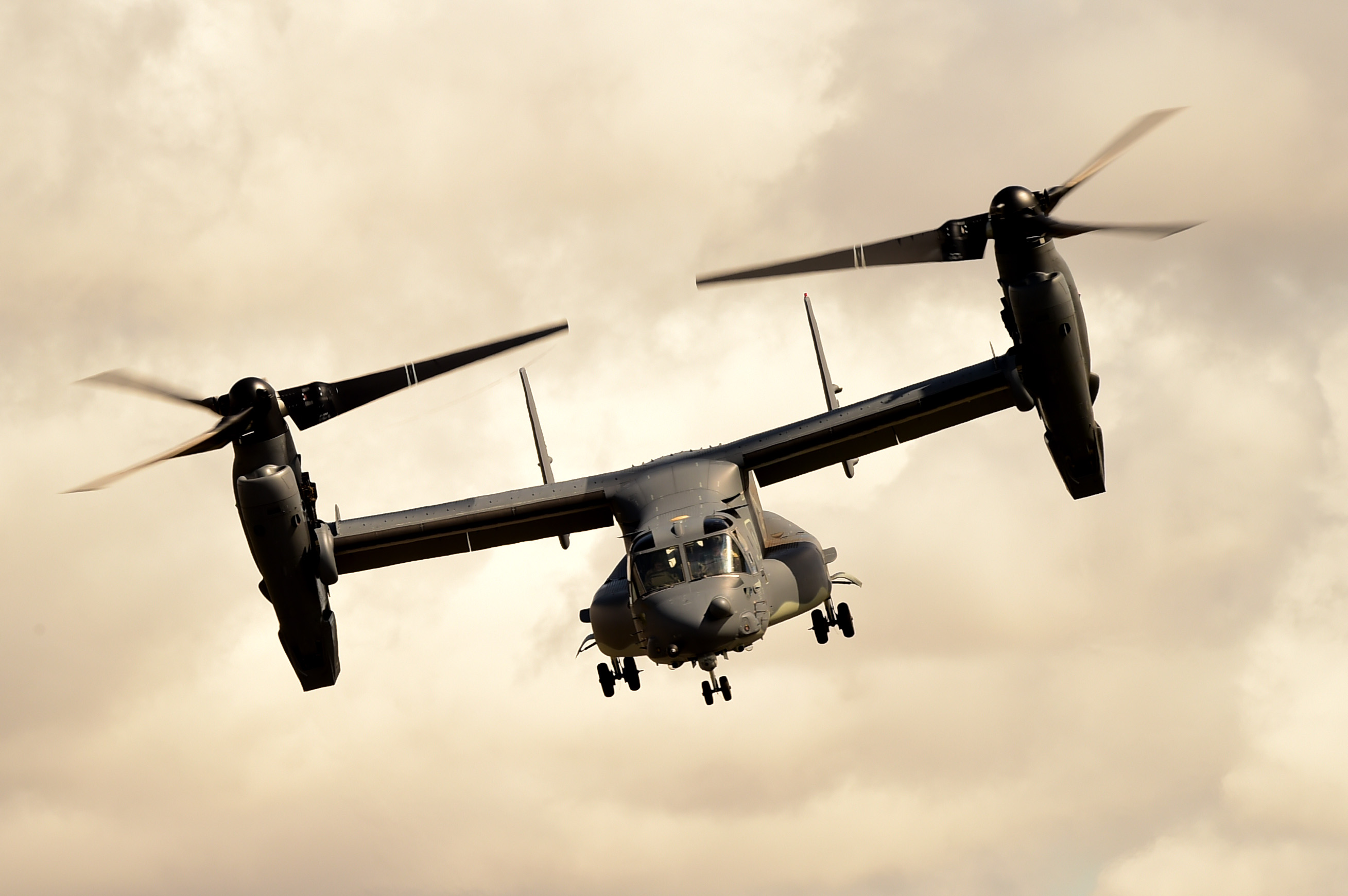The Air Force's program executive officer for intelligence, surveillance, reconnaissance, and special operations forces said boosting CV-22 readiness is one of his top priorities. Air Force photo by TSgt. Chrissy Best.
DAYTON, Ohio—Air Force Special Operations Command’s CV-22 fleet is raising alarm amid low readiness levels and combat availability concerns as it heads into multiple years of upgrades.
“CV-22 readiness keeps me up at night,” Col. Dale White, the Air Force’s program executive officer for intelligence, surveillance, reconnaissance, and special operations forces, said in a June 19 interview here. “It’s not what it needs to be. It’s a tough platform to maintain.”
The high-demand, rough nature of special operations, and the stress that tilting the iconic nacelles—the giant columns that hold the rotors and allow the platform to take off vertically, then pivot to fly forward—puts on the aircraft and its wiring system are driving down the Osprey’s ability to enter combat.
White declined to provide current CV-22 readiness figures. However, that number reportedly hovers around 50 percent for the Defense Department’s Ospreys, although the Marine Corps is making some progress to boost the number, according to Rotor and Wing.
The speedy tiltrotor platform flies long-range infiltration, exfiltration, and resupply missions for special operations forces. DOD plans to buy more than 450 V-22s and its variants, with the Marine Corps owning the vast majority.
The Air Force’s fleet of about 50 Bell-Boeing Ospreys is young—AFSOC received its first operational CV-22 in 2007—and the service is still learning the ins and outs of keeping it aloft. White said working with industry to improve the platform and keep it ready for a fight is one of his top priorities.
“We’re working with AFSOC on some different ideas, what I call bold initiatives, bold movements, to try to figure out how we can do that,” he said. “We have many things in play. The challenge is, when you have a platform like that that is struggling, and we’re going through a modernization process to help some of those issues that are kind of the catalyst to that struggle, you’re taking those platforms out of play to do the mod, right, so now your availability goes down even further.”
The Air Force is replacing the nacelles and wiring onboard the aircraft, as well as streamlining its various configurations to make maintenance less complicated. It’s not necessarily that the parts are broken, just that there’s more to learn, White said.
“I think that we’ve charted out a path to do that, but it’s going to take time,” he said of restoring readiness through upgrades. “I would probably say within the next three to four years, we’ll get it to where it needs to be. But at the same time, we’re still making incremental improvements. For example, some of the wiring replacement—that’s going to be a bridge that’s going to help us address the near-term challenges.”
Nacelle replacements in collaboration with the other services will take a few years. AFSOC will rotate Ospreys in for groups of modifications a few at a time to limit the ripple effects on the small fleet’s combat availability.
White added the Air Force benefits from the Marine Corps’ longer experience with Ospreys, which has helped alert AFSOC to potential problems, and from piggybacking off of a shared system program office. Still, he said the Air Force can hit roadblocks when working through the Navy-run supply chain.
Raytheon recently announced a partnership with the V-22 JPO to launch new artificial-intelligence technology to predict looming Osprey radar issues. The idea began as a pilot program in 2018 and is now being tested with the intent of boosting CV-22 readiness starting in 2020.
